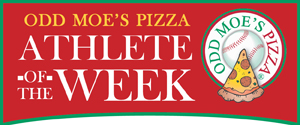Investigating the Bible: Recognize anger, don’t bury it
By DAVID CARLSON PASTOR
Anger is usually easy to recognize. Sociologists found that anger’s facial expression is universal. They traveled to a remote tribe in New Guinea and their photograph of an angry native man showed a furrowed brow and clenched jaw. When seen in others or felt ourselves, the Bible offers guidance on anger.
Work to defuse anger; don’t ignore it. Jesus said, “You have heard that it was said to those of old, ‘You shall not murder and whoever murders will be liable to judgment.’ But I say to you that everyone who is angry with his brother will be liable to judgment; and whoever says ‘You fool!’ will be liable to the hell of fire. So if you are offering your gift at the altar and there remember that your brother has something against you, leave your gift there before the altar and go. First be reconciled to your brother, and then come and offer your gift.” (Matthew 5:21-24, English Standard Version used throughout).
Think first; don’t speak. “Be angry, and do not sin; ponder in your own hearts on your beds, and be silent.” (Psalm 4:4). Solomon counseled, “Whoever is slow to anger has great understanding, but he who has a hasty temper exalts folly.” (Proverbs 14:29). Renowned Austrian psychologist, Alfred Adler, reportedly had a quick temper. At a dinner, the speaker’s comments infuriated him, so he jumped up from the table and rushed out a door, slamming it loudly. Someone commented, “Oh well, at least he’s gone.” Another responded, “No, he’s not. That’s a closet.”
Recognize anger; don’t bury it. Proverbs did not say, “Never be angry.” The apostle Paul said respond soon: “Be angry and do not sin; do not let the sun go down on your anger.” (Ephesians 4:26). Research has revealed a high cost for unresolved anger. Of persons who scored high on a hostility test at age 25, 15% had died by age 50. Of those who scored low on the same test, only 2% had died by age 50.
Prepare; don’t be surprised. Paul wrote, “Finally, be strong in the Lord and in the strength of his might. Put on the whole armor of God, that you may be able to stand against the schemes of the devil…Stand therefore, having fastened on the belt of truth, and having put on the breastplate of righteousness, and, as shoes for your feet, having put on the readiness given by the gospel of peace.” (Ephesians 6:10,14-16). “Blessed is the man who walks not in the counsel of the wicked, nor stands in the way of sinners, nor sits in the seat of the scoffers, but his delight is in the law of the Lord, and on his law he meditates day and night.” (Psalm 1:1-2).
The late veterinarian and author James Herriot wrote of visits to a farmer, Robert Maxwell. One of his cow’s had a hoof infection. To treat it, Herriot injected medicine in the neck. Unfortunately, the site got infected and a blood clot formed. The next night, Maxwell called. “That cow’s dead.” The clot had broken free and gone to the animal’s heart. Herriot was devastated. He killed a cow with a minor problem. The usual customer would be angry and maybe sue. Maxwell did neither. Instead, he called a month later with a new problem; could Herriot come? Herriot hoped to redeem his skill as a vet, but the problem in this cow was serious, a kidney infection, usually fatal in those early days. Then he thought about using a new antibiotic, penicillin. He administered multiple doses. In a few days, the cow miraculously recovered. The farmer never complained about his dead cow; he was consistently friendly. Herriot would later write about any time when he suffered because of someone’s mistakes and he felt anger rising, that “… I had a standard of conduct to follow. I tried to behave like Robert Maxwell.”
David Carlson Pastor (yes, that is his last name but not his profession) is a Polk County resident and graduate of Bethel Theological Seminary in Minnesota (M.Div., M.Th.)








Comments
fiddler
[One big mistake made in translating the Bible that has carried through almost 2,000 years is the words Nazareth and Nazarene. Nazareth did not exist during Jesus’ lifetime; it was a translation error. The original said Jesus was a Nazarene; so were his parents. The Nazarenes and Essenes were not just in one place, they were in many places, another misunderstanding. Josephus named all the towns in the area in his writings and there’s no Nazareth mentioned. Moving on.]
fiddler
The true Gospel of Matthew, aka Gospel of the Hebrews
Jerome (342-420 CE) translated a document he believed to be the original and true Gospel of Matthew from Greek into Hebrew. It comprises 28 quotes and during Jerome’s time, it was kept in Caesarea (“I have also had the opportunity of having the volume described to me by the Nazarenes of Beroea, a city of Syria, who use it”).
All of Jerome’s writings, BTW, have disappeared, like the Q (Quelle). But there is a historical record for the Gospel of the Hebrews that does not exist for Q. Q is simply a scholarly invention.
The Ebionites and Essenes considered the book the true Gospel of Matthew. Papias, who was a disciple of John the apostle, stated that Matthew recorded the sayings of Jesus in Hebrew and everyone translated them as best he could (Eusebius, Ecclesiastical History III, 39, 16).
There are texts by twenty church fathers who mention the Gospel of the Hebrews. Codex Sinaiticus—handwritten over sixteen hundred years ago—contains the oldest complete form of the Greek New Testament and has notes about making emendations from the Gospel of the Hebrews.
fiddler
“Eusebius boasted over Paul’s literacy and strongly suggested that there were several literate Apostles, but only Matthew and John wrote their eyewitness accounts down. Part of Matthew’s evangelizing was putting his testimony into writing for those he could not personally visit once he broadened his mission to non-Hebrews. Eusebius also explains that John’s Gospel was written last to fill in the gaps of what the others did not cover, and he probably started with Jesus’ divinity, not the genealogy, since Matthew and Luke had already covered that.
“The Gospel of the Hebrews was also on the verge of being included in the New Testament. Eusebius lists what books were accepted as true and genuine and which were disputed and false. He mentions the Apocalypse of John (Revelation) among those that was accepted by some and disputed by others and wrote that some had placed the Gospel of the Hebrews 'in which the Hebrews who have accepted Christ especially delight' in this same category (Eusebius, Eccl Hist, Books 1-5, p.179, book 3, chap. 25).
"So, the Gospel of the Hebrews and our canonical Matthew’s Gospel had later developed into two different manuscripts. In other words, an original Gospel by Matthew written in Hebrew was the original source. When church fathers disagreed on the Gospel of the Hebrews’ and Revelation’s authenticity, Revelation finally made it into the canon in the early 5thcentury while the Gospel of the Hebrews did not. But this is how close the Gospel of the Hebrews was to make it into our canon. It was initially in the same category as the Book of Revelation.” (Marianne Widmalm, The Times of Israel.)
One of the quotes has Jesus saying his mother was the Holy Spirit. Imagine people believing that today, let alone understanding what the quote means? Pity we don’t know the truth.
Lulu
So, are you saying never express anger and live forever?
Otis
Where is the section on dinosaurs and space travel?
Lulu
Reading this column is tantamount to visiting Hell.